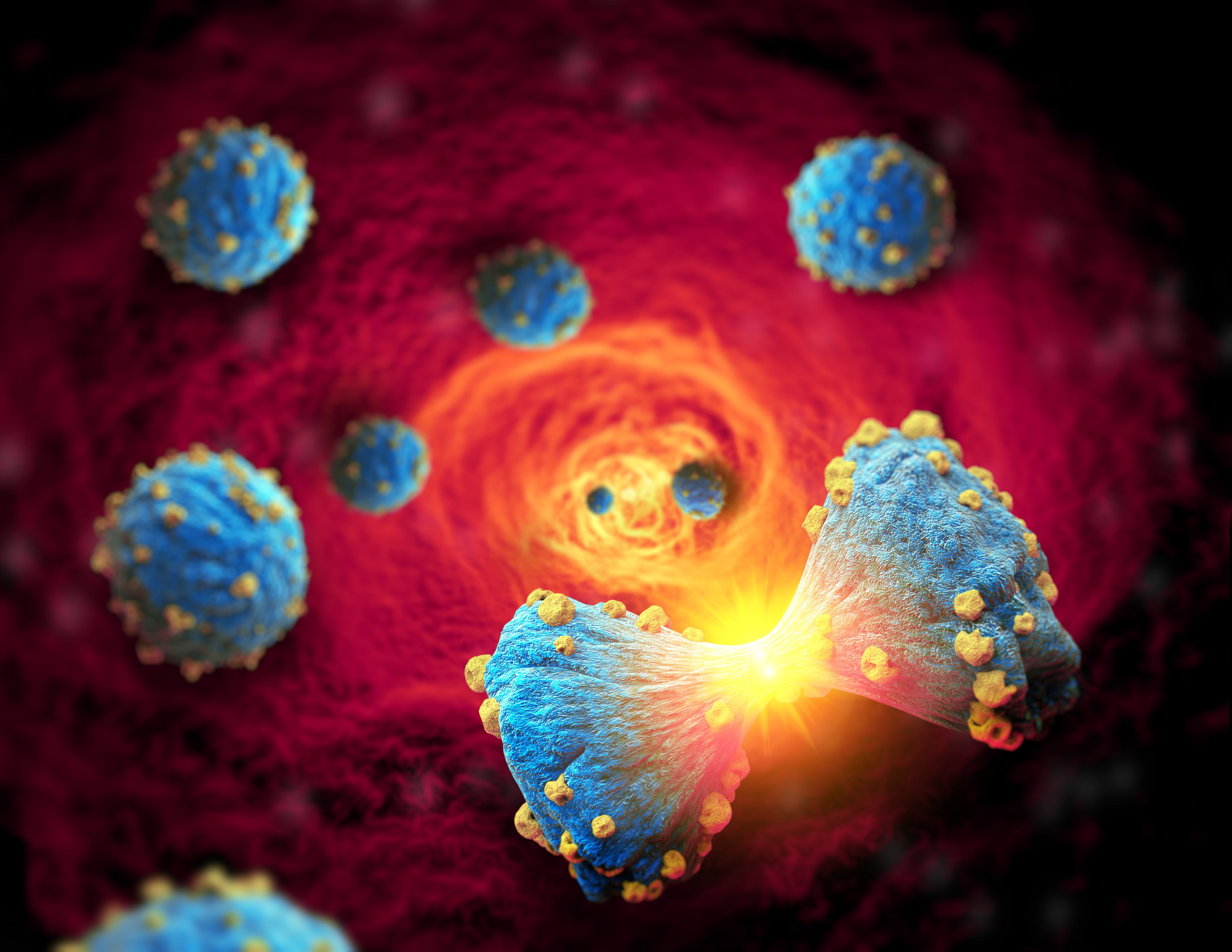DaraVCD May Be Alternative Option for Multiple Myeloma with High-Risk Cytogenetics
Interim findings from the phase 2 EMN19 study coupled with the phase 2 LYRA study findings suggest DaraVCD is another option for multiple myeloma with extramedullary disease.
Image Credit: © Giovanni Cancemi -www.stock.adobe.com

Treatment with the IgGκ monoclonal anti-CD38 antibody daratumumab (Darzalex), in combination with bortezomib (Velcade), cyclophosphamide, and dexamethasone (VCD), induced a complete response (≥CR) or better among 43% of patients, with a median progression-free survival (PFS) of 20 months in patients with multiple myeloma (MM) who have extramedullary disease (EMD).1
“To our knowledge, this is the first report of circulating tumor cells [CTC] in EMD, and CTCs were found to be positively correlated with [ISS (International Staging System)], both in percentage of patients presenting with CTC and quantitative CTC percentage,” wrote the study investigators.
The results, which were presented in a poster during the 2023 EHA Congress, come from the interim analysis of the phase 2 EMN19 study (NCT04166565).
After a median follow-up of 18.8 months, results also showed that the patients who had a lower number of plasmacytomas had better response outcomes, and the combination induced minimal residual disease (MRD) negativity and complete metabolic responses in the study subjects.
Best hematologic response was reported by MM status. In the overall study population, the ≥CR rate was accompanied by an MRD negativity rate of 48.1%. Further, 75.0% of patients experienced a very good partial response (≥VGPR) or better, for an overall response rate (ORR) of 80.0%.
In the first-relapsed population (n = 11), the MRD negativity rate was 28.6%. The ≥CR rate was 18.2%, while the ≥VGPR rate was 54.5%, achieving an ORR of 54.5%. In the newly-diagnosed (ND) population (n = 29), the MRD negativity rate was 55.0%. In addition, 51.7% of patients had ≥CR, and 82.8% had ≥VGPR, achieving an ORR of 89.7%.
An assessment of response by PET per the Impetus criteria also revealed that all 3 patients in the first-relapsed group and 11 of 15 in the ND group experienced complete metabolic response.
According to the study investigators, being ND or in first relapse correlated with the achievement of ≥VGPR. Further, having 1 vs >1 plasmacytoma(s) at baseline also correlated with the achievement of ≥VGPR. Finally, of the 17 patients assessed for MRD, 13 were MRD negative following DaraVCD treatment. Notably, 11 of the patients who were MRD negative hasd NDMM and 2 were in first relapse.
Currently, no standard treatment exists for EMD aside from radiotherapy. Based on the fact that EMD plasma cells express CD38, it was hypothesized that daratumumab would be an effective addition to armamentarium for patients with NDMM and EMD. In preclinical studies, the DaraVCD regimen demonstrated that it can aid with overcoming high-risk cytogenetics.
The multinational, open-label, phase 2 EMN19 study included 40 patients with NDMM who had EMD. The primary goal of the study was to determine the CR rate of DaraVCD. The secondary end points of the study included ORR, PFS, and overall survival (OS).
Daratumumab16 mg/ml was administered by IV initially followed by subcutaneously at 1800 mg. The dosing schedule for daratumumab during the study was either weekly during cycles 1 through 2, bi-weekly during cycles 3 through 6 and every 4 weeks during cycle 8 and beyond. Velcade was administered subcutaneously at 15 mg/m2 every week, cyclophosphamide 300 mg/m2 was given orally or by IV infusion on a weekly basis, and dexamethasone 20 mg was administered orally or by IV infusion on days 1, 2, 8, 9, 15, 16, 22, and 23.
PFS by MM status showed that patients in the first-relapsed population had a median PFS of 15.3 months (95% CI, 0.95 to not reached [NR]) vs NR (95% CI, 7.2-NR) in the ND population. Those with 1 to 2 plasmacytomas had a median PFS of NR (95% CI, 10.2-NR) compared with 15.3 months (95% CI, 2.2-NR) in patients with 3 or more plasmacytomas.
Overall, 38 out of 40 patients had evaluable CTC, which was detected in 68.4%. The rate of ≥VGPR was similar regardless of CTC detectability.
All patients in the interim analysis set had a median age of 58.0 years. The oldest age of a patient in the study was 77 years.The majority of the population were male with ISS stage I or II disease. Few patients had ISS stage 3 disease. Sixty-five percent of patients had 1 or more EMP plasmacytoma, 45.0% had 1 or more patients paraosseous plasmacytoma, and 10.0% had both. The median number of plasmacytomas found was 2.0 (range, 1-16). Out of 25 FISH evaluable patients, 24.0% had high-risk cytogenetics at baseline.
Overall, treatment is ongoing in 19 patients at sites in Turkey, Greece, and Italy. As of data cutoff for the interim analysis, 21 patients discontinued the study. Of those who discontinued, 61.9% had progressive disease, 14.3% died, 4.8% withdrew, and 4.8% discontinued due to physician’s choice. Ten patients underwent transplant during the study period.
“Based on the level of current responses approaching the results of the LYRA study which includes a similar DaraVCD protocol among NDMM, this protocol may be considered as an alternative for this high-risk population of unmet need,” the study investigators wrote.
REFERENCE:
Efficacy of daratumumab plus bortezomib, cyclophosphamide and dexamethasone in patients with multiple myeloma presenting with extramedullary disease: A European Myeloma Network study (EMN19). Presented at: EHA 2023 Hybrid Congress; June 8-11, 2023; Frankfurt, Germany. Abstract P872.